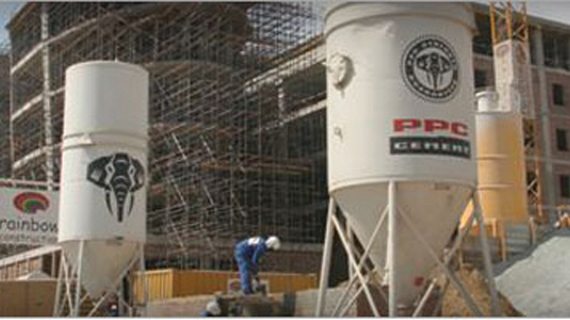Government to engage cement producers on prices
THE Ministry of Industry and Commerce is set to engage local cement producers on pricing with a view of reducing the cost to make it affordable for most people without compromising on quality.
Pretoria Portland Cement (PPC)
The country has three major cement producers – Pretoria Portland Cement (PPC), Lafarge Cement Zimbabwe and SinoZim.
A 10kg bag ranges between US$10-12. Last week, Senators raised concern that the local product is far more expensive when compared to Zambia-manufactured cement.
The Zambian product costs between US$3.50 and US$6 and Senators said locals might end up opting to import.
In response, Industry and Commerce minister, Dr Sekai Nzenza, said although the Zambia product is cheap, they hardly match local products on quality.
She acknowledged price differences but said since cement is a key product in construction, infrastructure and housing, there should be no compromise on quality.
The minister said a report from the Consumer Protection Council indicated that the local cement is of high quality compared to that from Zambia.
“The prices that you have made reference to are true.
In Zambia, it varies from US$3.50 to US$6.
“There are differences on the cement that is manufactured in Zambia and the one that we have in Zimbabwe,” said Dr Nzenza.
“The differences are in quality and standards. I have a report that came from the Consumer Protection Council and they have highlighted that the cement from Zambia does not set very well when you apply it on the floor and if you use it on the wall, that wall may collapse.
“As the custodians of quality and standards in this country, we do not want to see that happening,” she said.
To buttress the high quality of the local product, Dr Nzenza said cement from SinoZim has been used in the construction of the new Parliament building in Mount Hampden near Harare and it is the same cement that is being used on the major roads like the one from Beitbridge to Chirundu.
“It’s a strong type of cement. Be that as it may, I urge that as Zimbabweans, we should look at the durability of this product because such type of cement will last a long time.
“As a ministry, we will talk to those that produce cement so that they can reduce their price so that it can be affordable to the majority of the people,” said Dr Nzenza.
Under the Second Republic, the Government has among other fundamentals, prioritised infrastructural development to promote economic growth and development in line with Vision 2030, where an upper-middle-income economy status is targeted.
Hwange Thermal Power
Huge quantities of cement are being used in various projects nationwide that include the Lake Gwayi-Shangani investment, the US$1,4 billion Hwange Thermal Power Expansion project and Kariba South Hydropower Station expansion project.
Other massive infrastructural development projects such as the Bulawayo-Beitbridge Highway rehabilitation project are also ongoing.
Similarly, Zimbabwe is experiencing a massive boom in housing construction spearheaded by the Government and private developers, a development which has choked supplies of critical raw materials with suppliers now struggling to cope with rising demand.
The spike in demand for cement is seen as a positive signal of economic growth and a confidence booster in the country.-chronicles











